A3 Mk1
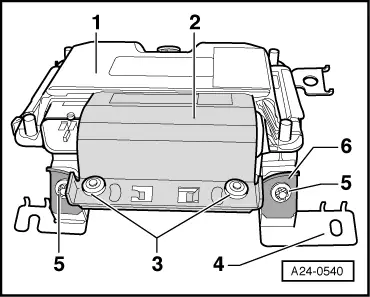 |
|
|
Note: Item -1- in the illustration shows the engine control unit with protective metal casing. |
 |
|
|
→ As a deterrent against unauthorised access to the connectors on the engine control unit, the control unit -1- is bolted to a metal casing -4- by means of shear bolts -3- and a locking plate -2-. The threads of the shear bolts are additionally coated with a thread-locking compound to make them more difficult to remove. In order to unplug the connectors from the engine control unit (for instance when connecting the test box), the locking plate -2- must be separated from the protective casing. The required procedure is described below: |
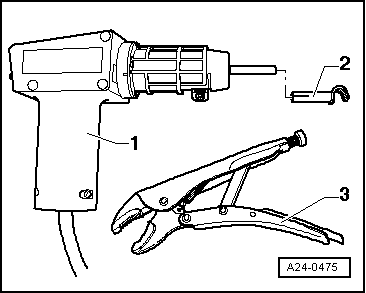 |
|
|
The following tools are required:
Procedure: Caution
Keep exactly to the following procedure to avoid damage (burning) to the wiring, connectors, insulation or the control units. Follow the operating instructions supplied with the hot-air blower. |
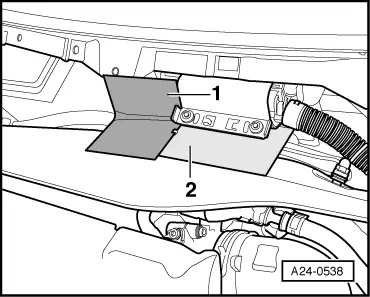 |
|
|
→ To avoid damage to wiring or connectors, use heat shields (Items -1- and -2-, consisting of metal plates). |
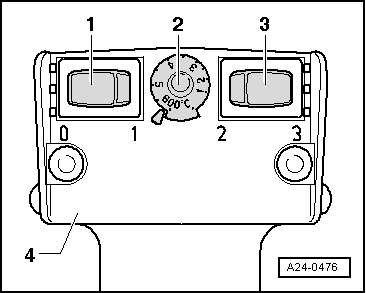 |
|
Note: In the next step the blower is used to heat the shear bolt in the locking plate. This reduces the effect of the thread-locking compound so the bolts can then be removed more easily. Warning
When the threads in the locking plate are heated up, this also heats the shear bolts and parts of the metal casing. Take care not to burn your hands. Also make sure that, as far as possible, you only apply heat to the threads and not to the adjacent parts. Cover these up if necessary. |
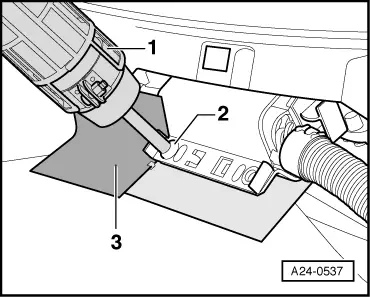 |
|
Note: Be particularly careful here because the control unit connectors are very close to this bolt.
|
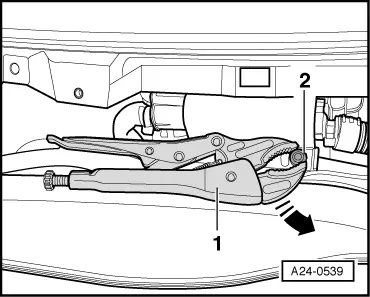 |
|
Repeat the procedure for the second shear bolt. Be particularly careful here because the control unit connectors are very close to this bolt.
|
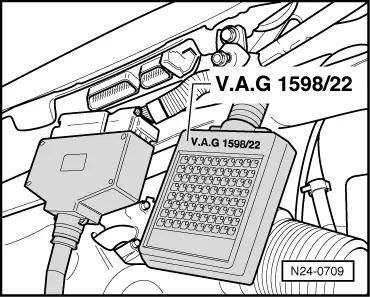 |
|
Perform the following operations after reconnecting engine control unit: Installation is performed in the reverse sequence. Install metal casing (with locking plate) on engine control unit. Use new shear bolts.
|
